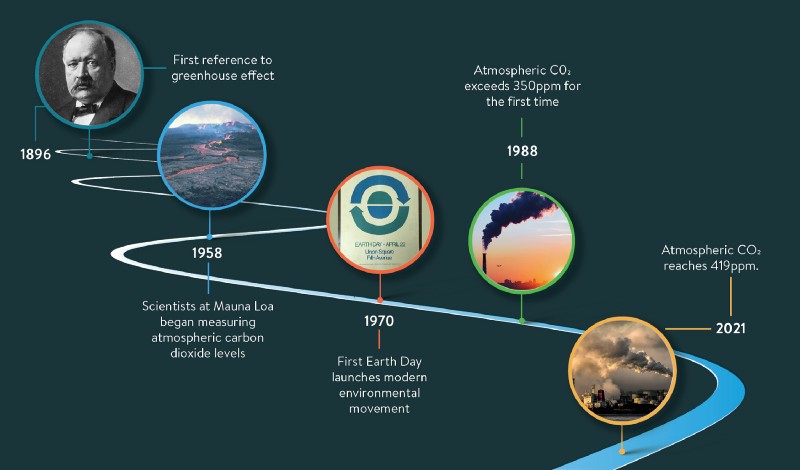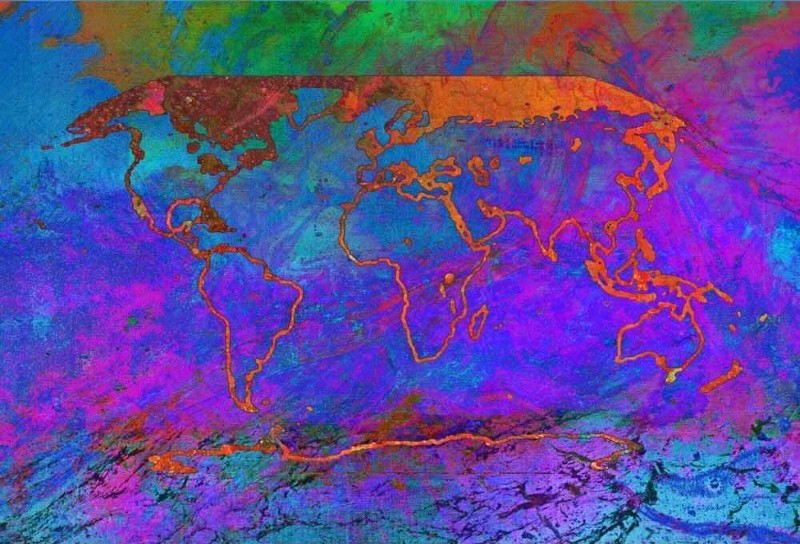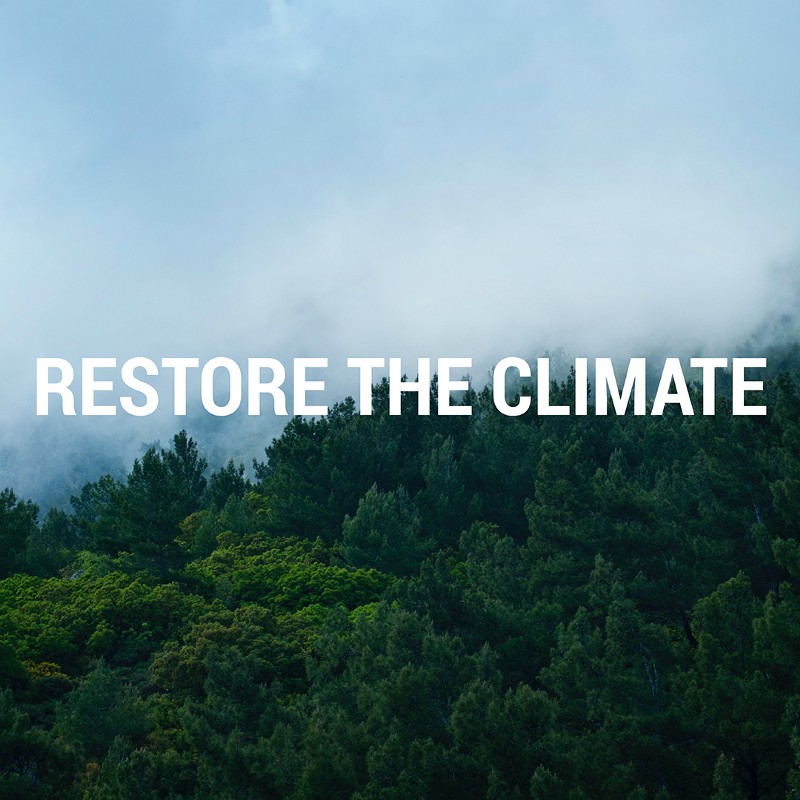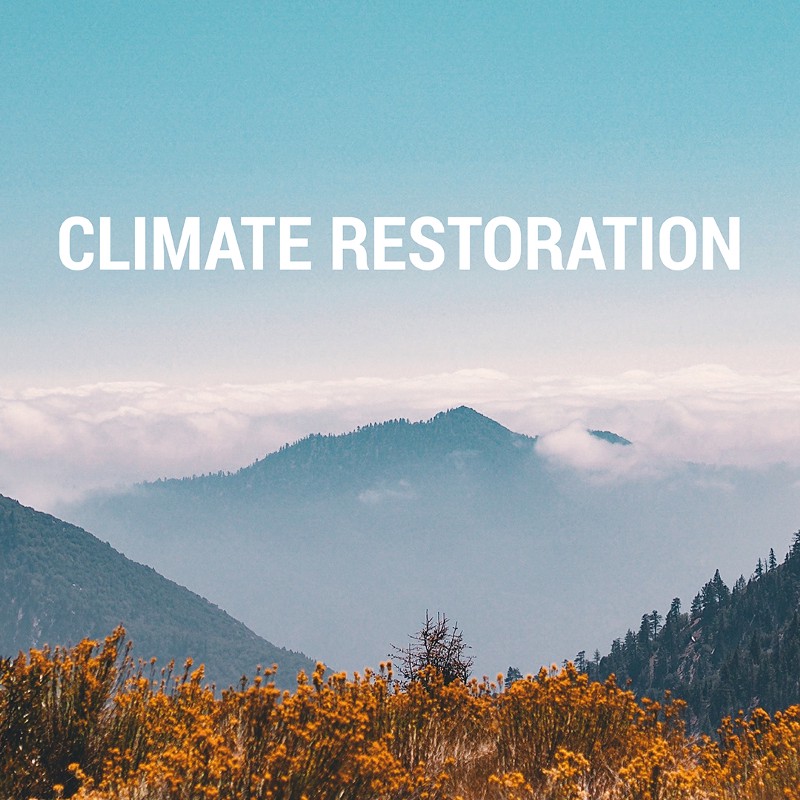Why isn’t everyone talking about climate restoration?
For those new to learning about climate restoration, it can feel like an epiphany.
OF COURSE! Of course global climate goals should focus on the long-term survival and flourishing of humanity and our natural world. Why doesn’t everyone see this? Why isn’t everyone talking about it?
We think there are two key reasons: (1) People assume that if emissions are the root cause of climate change, then stopping emissions will fix the problem, and (2) Activists have seen their calls for emissions reduction dismissed for so long that they’re fed up and see other pathways as a distraction from the needed action.
Reason 1: There’s an implicit assumption that if emissions are the root cause of climate change, then stopping emissions will fix the climate crisis.
It’s been well over a century since scientists realized that burning fossil fuels causes an enhanced greenhouse effect, warming our planet’s climate. The last half a century has seen scientists and environmentalists begin to rally for reducing greenhouse gas (GHG) emissions. More than three decades have passed since our atmospheric concentration of CO2 exceeded 350 parts per million (ppm), the critical threshold which most scientists consider to be “safe”.

Ever since we crossed the threshold of 350 ppm in 1988, simply reducing emissions was never going to be sufficient to reverse the unsafe levels of atmospheric CO2. There was already too much CO2 in the atmosphere, and changing how much we’re adding wouldn’t fix that. While natural carbon sinks, like forests and oceans, absorb some excess CO2, the majority lingers in the atmosphere for hundreds to thousands of years. An alternative, proactive solution was needed to remove the excess CO2 from the atmosphere.
But that didn’t happen.
Instead, emissions continued to rise, and the cry of “We must reduce emissions!” grew louder. Today, we would be hard-pressed to find someone who didn’t answer that the “solution” to climate change is to reduce emissions. Very few realize, however, that even if all emissions stopped tomorrow, the problem would not be solved.
While it is still critical to reduce emissions, current annual emissions only make up 5% of the problem. Emissions from the last two centuries account for 95% of the excess CO2 causing our climate to change.
Efforts are well underway to reach net-zero emissions, but almost no one is seriously talking about removing the legacy CO2 in the atmosphere yet.
Reason 2: Calls for emissions reduction have been dismissed for so long that activists are fed up.
The urgency to stop the continually rising GHG emissions has largely drowned out calls for other types of climate action. Carbon dioxide removal (CDR) has finally gained attention in the last year, but so far discussions are limited to using CDR to help us reach net-zero emissions rather than looking beyond net-zero and addressing lingering historic emissions.
Of course, CDR without emissions reduction would be futile (think of opening the drain on an overflowing bathtub while the faucet is still on full blast), and it would prolong the life of the extractive and environmentally detrimental fossil fuel industry. But mitigation (emissions reduction) without CDR is also futile. Many long-time climate activists say, “First, we must reach net-zero emissions. Then, we can start dealing with our historic emissions (excess atmospheric CO2).”
We think that these activists are on the right track: CDR cannot be an excuse to continue decades-long tactics of delaying emissions reductions. It’s long past time to act with urgency on our emissions problem. However, we truly believe that we can — and must — do both mitigation and restoration in concert. If we delay building up the CDR capacity needed to restore the climate until after we’ve reached net-zero, it will be too late.
So, why isn’t everyone talking about climate restoration? Because after half a century of calls for emissions reductions have been ignored, climate activists are fed-up with inaction, delay, and distraction tactics. Many believe that reaching net-zero emissions will fix the climate, and most worry that building up the CDR capacity needed for climate restoration will give license to polluters to keep polluting. It’s critical that climate restoration efforts acknowledge and address these critical concerns, and that mitigation and restoration be carried out in concert and with urgency.


